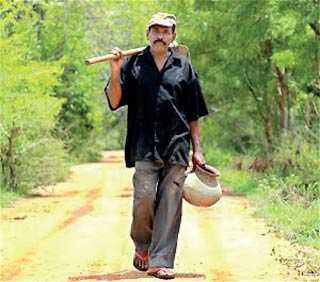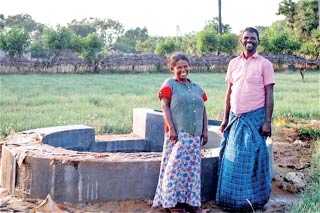Saturday Apr 12, 2025
Saturday Apr 12, 2025
Monday, 22 March 2021 00:00 - - {{hitsCtrl.values.hits}}
 |
| The value of water is about much more than its price – water has enormous and complex value for our households, culture, health, education, economics and the integrity of our natural environment. If we overlook any of these values, we risk mismanaging this finite, irreplaceable resource |
 |
Clean water and sanitation are basic human rights. Today, water is under extreme threat from a growing population, increasing demands of agriculture and industry, and the worsening impacts of climate change. As societies balance the demands on water resources, many people’s interests are not being taken into account.
Yet in 2017, 2.2 billion people, that is 29% of the world’s population, did not have access to drinking water that was free from contamination and available on premises when needed. 785 million people lacked even basic drinking water services, which include piped water, boreholes or tubewells, protected dug wells, protected springs, and packaged or delivered water.
Of those who lacked basic access to water, eight out of ten people lived in rural areas. These statistics are devastating when clean water and sanitation are viewed as being essential to the realisation of human rights.
In Sri Lanka, only 57.7% of the population has access to pipe borne water. Although the remaining population has access to basic water through self-sufficient methods such as protected dug wells, rainwater harvesting systems and nearby public point sources, access to safe water continues to be a critical issue.
UNDP in Sri Lanka Team Lead and Policy Specialist of the Climate and Environment Team Dr. Buddika Hapuarachchi concurs, “With the climate crisis worsening, the resultant environmental issues further catalysing social inequalities and increasing pressures on already scarce natural resources essential to human life such as water, the wellbeing of our communities are at heightened risk.”
This year´s theme World Water Day is about what water means to people, it’s true value and how we can better protect this vital resource.
Water; the backbone of Sri Lanka
In Sri Lanka, water is interwoven into the core of its social and cultural spheres. Ancient villages were designed around water sources for their sustenance, while kings developed cascade systems to enhance the long-term development of the surrounding natural resources on which the communities and their livelihoods depended.
This year’s theme for World Water Day, ‘Valuing water’, is central to the rich community and sustainability centred identity of Sri Lanka. Yet, in the 2020 Global Climate Risk Index, Sri Lanka ranked 6th among the 10 countries most affected by extreme weather events in 2018.
In the recent past, owing to the many effects of climate change, Sri Lanka’s Dry Zone, which covers 70% of the country’s land area, has experienced some of the worst droughts in the island’s history. With this area being home to a majority of the country’s farmers and smallholders, rural communities bear the brunt of water issues in the country. Ensuring an uninterrupted supply of drinking water during periods of drought; reduced quality of water from public point sources which scientific speculations link to the cause of Chronic Kidney Disease (CKDu) which is prevalent in some of the areas in the Dry Zone; limitations in the country’s water production capacity and stress on its water resources, and the partial treatment and water quality deterioration are some of the crucial issues that affect Sri Lanka.
Women and water
In addition, water and sanitation have social impacts that are often gendered. The lack of access to adequate water and sanitation services has a greater impact on women and children, with links to an increase in the threat of Gender Based Violence (GBV).
Women’s inequitable access, and in most cases, lack of access to financial resources, economic opportunities, technology and skills training, and the abysmal representation at decision-making levels, dictate how and on what conditions women have access to these resources. Given this position of vulnerability, women often face increased levels of intimate partner violence, and other forms of GBV, furthering entrenchment in poverty through their interactions with natural resources – especially those as crucial to survival as water.
Due to gendered cultural norms in most countries, women and girls are given the responsibility to fetch water, manage daily water use and storage, and access to water. Not only does such unequal access prevent women and girls from focusing their time and energy on more economically and personally productive activities, like attending school or engaging in an income generating activity, but it also leads to a further entrenchment in poverty while increasing their vulnerability to risk of sexual harassment and danger.
Global observations are synonymous to the local context too. 29-year-old Baleswary from Vavuniya has similar struggles. The mother of a toddler and a preschooler, she lacks access to clean drinking water due to the absence of water filtering equipment in her area and has to pay Rs. 3 for every litre of clean water obtained. Unable to afford such costs, she and her two daughters have had to resort to using untreated, contaminated water. For women like Baleswary, and many others in her community, water means hardship, evidence of severe inequalities and ever-increasing vulnerability.
Responding to these challenges, the ‘Climate Resilient Integrated Water Management’ (CRIWMP) project implemented by the Government of Sri Lanka with technical support from the United Nations Development Program (UNDP) and funding of the Green Climate Fund (GCF); is working together with communities to find a comprehensive solution to strengthen the resilience of smallholder farmers in the Dry Zone to climate variability and extreme events.
Through an integrated approach to water management, the seven-year project targets households in three river basins – the Malwathu Oya, Mi Oya, and Yan Oya (rivers)- which flows through the Northern part of the Dry Zone.
An innovative project involving the rehabilitation of 325 reservoirs, of an ancient water distribution structure known as the cascade system has created a platform, to rehabilitate especially deprived parts of this system. The cascade system is one of the oldest water mobilisation schemes on the planet. The selected 16 cascades consist of hundreds of small reservoirs known as ‘tanks’, all connected by irrigation channels.
A component of the project is also focused on harvesting rainwater for villages and households, which help families to adapt to the effects of climate change.
Dr. Buddika went on to note, “Progress on all other facets of development such as reducing poverty, achieving universal access to basic services, ending hunger, reducing malnutrition, ensuring food security, combating diseases and reducing gender inequality and ending all forms of violence against women and girls depend on equitable access to affordable and safe water, therefore pre-emptive, holistic and effective work towards achieving SDG 6. ‘Water and Sanitation for All’ is vital.”
Experience from the field indicates that ‘Domestic Roof Water Harvesting and Recharge’ is a viable and simple technology to improve access to safe water in the dry zone villages. “Protection and improvement of catchments and watersheds of all water resources are vital to improving the drinking water security as well as quality. Implementation of catchments and watershed protection at the village level, small tank, cascade and lager river basin levels are essential within the community,” adds UNDP in Sri Lanka Water Supply Specialist Sajjan Jayasiriwardane.
Therefore, as we examine the impact of this basic yet vital resource, it is important that we identify the issues faced by communities and work towards providing equitable access to safe and clean water to all.
The value of water is about much more than its price – water has enormous and complex value for our households, culture, health, education, economics and the integrity of our natural environment. If we overlook any of these values, we risk mismanaging this finite, irreplaceable resource.
Discover Kapruka, the leading online shopping platform in Sri Lanka, where you can conveniently send Gifts and Flowers to your loved ones for any event including Valentine ’s Day. Explore a wide range of popular Shopping Categories on Kapruka, including Toys, Groceries, Electronics, Birthday Cakes, Fruits, Chocolates, Flower Bouquets, Clothing, Watches, Lingerie, Gift Sets and Jewellery. Also if you’re interested in selling with Kapruka, Partner Central by Kapruka is the best solution to start with. Moreover, through Kapruka Global Shop, you can also enjoy the convenience of purchasing products from renowned platforms like Amazon and eBay and have them delivered to Sri Lanka.
Discover Kapruka, the leading online shopping platform in Sri Lanka, where you can conveniently send Gifts and Flowers to your loved ones for any event including Valentine ’s Day. Explore a wide range of popular Shopping Categories on Kapruka, including Toys, Groceries, Electronics, Birthday Cakes, Fruits, Chocolates, Flower Bouquets, Clothing, Watches, Lingerie, Gift Sets and Jewellery. Also if you’re interested in selling with Kapruka, Partner Central by Kapruka is the best solution to start with. Moreover, through Kapruka Global Shop, you can also enjoy the convenience of purchasing products from renowned platforms like Amazon and eBay and have them delivered to Sri Lanka.